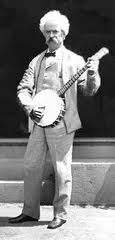The National Endowment for the Arts is not in its essence a presenting organization. Its annual productions of ceremonies inducting new Jazz Masters, like the one at Dizzy’s Club in Jazz at Lincoln Center on January 14, Â are special projects, probably stretching the Endowment’s resources of staff, finances, time and energy.

Jazz Master Gerald Wilson, right, conducts a young ensemble through Jazz Masters Live event – NEA Arts.gov
I commented in my last post that media attention to this event is unfortunately much less than it deserves, and suggested three ways outreach, hence notice, might be improved, which I’ll return to below. But meanwhile, I left out an entire important piece of the NEA’s jazz initiative, which David Fraher of Arts Midwest detailed in a comment to the blog —
Thanks, Howard, for this insightful piece on the importance of the NEA Jazz Masters ceremony to the jazz community. I agree, the work of these incredible artists ought to be celebrated more broadly—not only to recognize their contributions to this art form, but also to help build future generations of jazz enthusiasts. I do want to share some information on a National Endowment for the Arts (NEA) initiative (managed by Arts Midwest) that tries to do just that – NEA Jazz Masters Live.
NEA Jazz Masters Live is a national program that provides grants ranging from $7,500 to $15,000 to jazz festivals and nonprofit presenting organizations to support performances, master classes, clinics, lectures, and workshops featuring NEA Jazz Masters. While Arts Midwest has been managing this program (or its predecessor NEA Jazz Masters on Tour) since 2005, in just the past four years, we’ve awarded 50 grants totaling just under $1 million to organizations located across the United States. These engagements have featured more than 40 Jazz Masters and have reached more than 130,000 individuals, including more than 7,200 youth—that essential and often overlooked jazz audience that you rightly identify in your article.
While many of these events have been large performances or festivals, some of my favorites have featured more intimate opportunities to connect with the artists—panel discussions featuring Dan Morgenstern and a film screening featuring Herbie Hancock in Burlington, VT; a small performance by Chick Corea to K-12 students in Shelburne, VT; a vocal workshop with Sheila Jordan in Healdsburg, CA; Kenny Barron’s open sound check for high school jazz band students in San Francisco, CA; jam sessions between Jimmy Owens and a student jazz quintet in Cleveland OH; masterclasses featuring Jack DeJohnette, Randy Weston, Paquito D’Rivera in areas such as Baton Rouge, LA and Hartford, CT; and open rehearsals and Q & A sessions with Ellis Marsalis in New Orleans, LA.
These events, and countless others featuring Jimmy Cobb, Benny Golson, and Jimmy Heath in places such as Detroit, MI; Stonington, ME; New York, NY; Washington, DC; and Moscow, ID are beginning to meet that important need that you, the NEA, and Arts Midwest see—a need for more opportunities to engage with this art form and to honor these American legends. If you or your readers want more information on this program, please visit http://www.arts.gov/national/jazz/jml8.html.
The Jazz Masters Live program is obviously a Federally-financed plus towards spreading our jazz culture farther — Â in-person exposure of students to Jazz Masters is invaluable, and the all-year-’round sustenance of JMLive activities is another good thing. But I still think America is losing out on a great opportunity if the Masters’ induction ceremonies isn’t exploited for its full media potential. The outreach areas I identified previously were:
- Make the event more public and media-friendly,
- Show that jazz is relevant to young audiences, and so are jazz’s elders
- Collaborate with commercial producers who know how to put on a really big show, promoted where people go to get their information now.
Not to give away all my advice, I’ll expand on those ideas only by suggesting that presently available, inexpensive and interactive media could be employed to advance the Jazz Masters a whole lot more.
- Many Masters, not just the new ones, assemble on the day of the investiture for a luncheon hosted by BMI — how about an hour or two between lunch and the 5 pm photo op to have any the Masters who volunteer to do so sit for exchanges with remotely-based press and/or public over Skype?
- How about if, in advance, testimonials to the Masters from some of the hot players of the moment (i.e. Esperanza Spalding, Robert Glasper, Miguel Zenon, Chris Botti?) be collected  rolled out on via the NEA’s social media platforms, building interest from, say, January 1 to the event date?
- If that seems overly promotional for the production — well, why isn’t a promoter producing the event’s broadcast with corporate underwriting?
Isn’t it enough for the NEA to select the Masters, reward them with honoraria, help support their subsequent Live appearances — must this government office also be expected to stage a show that will draw a broadcast audience comparable to, say, the Kennedy Center honors or the Mark Twain Prize for Humor?

